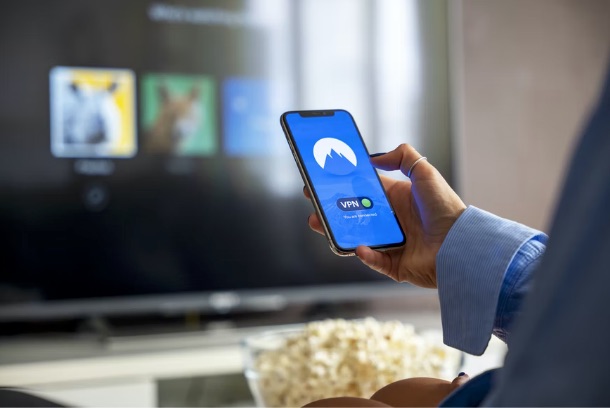Also Interesting
Guide to protection from cybersecurity risks in Canada

When the entire world was shut down, the digital world was afloat and how. But at the same time, some malicious acts were being warranted by suspicious scammers all across the world. The risks in Canada, however, catapulted into another epidemic of some kind.
Basically, scammers and hackers were in full swing during the COVID-19 pandemic as they continued to exploit victims by tricking them into falling prey to malware scams. This was done viciously via phishing campaigns and compromised credentials. Of course, other methods were also optimized, resulting in havoc on the digital space.
It’s one thing to suggest that cybercrime was at an all-time high during the pandemic and a completely different story when you look at the facts. Did you know that roughly 57% of Canadians have reported falling prey to cybercrime activity during the first year of the pandemic?
These schemes were malicious to another level and led to all sorts of disruptive outputs for individuals as well as businesses and organizations. The most common victims were the health sector because it was not only under the spotlight at the time but also under tremendous amounts of pressure.
If only, Canadians had used at the time, the problem wouldn’t be as big as it turned out to be in the end. VPNs are the best tool to protect yourself against online threats. However, those who’re running low on budget can get free VPNs to secure your privacy in Canada by VPNRanks.
Mind you, free VPN services might not work the same way as the premium ones. They may lack security features, server infrastructure, or limit you with bandwidth cap or whatnot. If you want to way have limitless security without any compromises, we always suggest premium VPNs.
But if you still opt for a free VPN service, make sure to get it from a trusted source, as mentioned above. In this article, we will discuss how Canadians can protect themselves from such cybercrime activities and run their operations online smoothly.
The 3 Most Common Types of Cyberattacks on Canadians
When you get to start studying the world of cybercrime and digital intricacies, you’ll come to the realization that cyberattacks are extremely complex and difficult to pull off. They are also the most common form of criminal activity in the current day of digital supremacy.
Once you understand that, you’ll be interested in knowing the most common types of cyberattacks that were being targeted at Canadians during the pandemic. Well, we have explained all three for you below.
Health Sector – Brutal Ranson Attacks
As we said earlier, the pandemic was a rough period for Canada as its digital space was a constant target of cybercrime activity. Now, the health sector took a massive beating as it was being targetted for ransomware regularly. In fact, these attacks were elevated to new heights, and honestly new lows, when they held patient medical records and medical research. The attempts were made to hijack operating devices and steal information to commit fraud on hospitals, labs, and clinical funding.
Relief Payments Were Stolen
GCKey is an online portal local to the Canadian Government that the hackers targeted to steal all the relief payments transferred through the credentials stuffing. Wondering how these attacks occur so easily? Well, there’s always a loophole in the system that these hackers find out so efficiently. These hackers opted for stolen usernames and passcodes that were made available on a variety of websites.
This information was then used to find the email accounts, and tracking was done via similar log-in credentials. This was made possible since these websites don’t seek the two-factor authentication key.
This is exactly why online privacy should be taught in school. There are so many ways you could at least increase your privacy online and protect yourself from compromising and vulnerable situations. If only people understand the importance of using fake email addresses while surfing third-party websites or shopping online.
And if only, these sites conducted two-factor authentication models, such advances would never be made in the world of hacking and malware.
Fake COVID-19 Tracing Apps
Now this one was not done without planning due to the sophisticated nature of the malware. This was obviously a massive ransomware threat that played with the sensitivity of the situation and the vulnerability of the victims at the time. People were obviously tricked into believing that there was an app that could help them trace whether or not they have been in contact with a person carrying the COVID-19 bodies.
It obviously worked because people ended up downloading it, which eventually encrypted their data and locked them out of their own devices. Now the only way they were given access to their device again was by paying the ransom.
Of course, these attacks are pre-planned and attack organizations targeting confidential data, funding, and much more. Thus, it’s best to practice protection and apply filters and security checkups regularly.
How to Increase Protection and Secure Yourself from Cybercrime?
Now that we’re made aware of the malicious activities that go down when we put our guard down, we’re prepared and enlightened enough to know that cybersecurity is a matter of priority. And so, here are some ways you can ensure utmost protection and safety online.
Backup Infrastructure
The most important method to implicate here is to have a backup infrastructure. This is extremely important for businesses and industries where information is power. If you have a backup infrastructure in place, you wouldn’t have to worry about paying ransom to gain back its access.
Subscribe To A VPN
By investing in a VPN, you can solve many issues simultaneously. The most crucial gift that a VPN offers is that of encryption and security. If you have subscribed to a premium VPN, no matter what you do online, your presence will be protected at all costs.
You may be tempted to use a free VPN service, but they don’t perform as efficiently as the premium ones. Besides, who are we to complain? We are not paying for it, or are we? Hence, your safest bet is to trust a legitimate and premium VPN service provider for robust and utmost security.
Keep Different Passwords
This is obviously one of those nerdy tips out there but an essential one at that. We touched bases with this tip earlier but it must be emphasized once again due to the level of significance it brings. If you have different passwords for different accounts online, it will be difficult to track your secured personal information and trap you into hacking or ransomware.
Two-Factor Authentication
Alway enable and activate the two-factor authentication method on your online accounts. This is a security measure that functions as a second layer of protection and gives you time to gain access back. This trick quickly notifies you if your account is ever vulnerable to threats.
In Conclusion
Online security is of utmost importance in this modern-day age. You’re constantly being threatened with extortion and ransomware and you must heighten your security measures to ensure safety. By following the tips mentioned above, you can upgrade your safety measures and potentially save yourself from embarrassment, anxiety, or any other difficult situation.
Also Interesting
How to Deposit and Withdraw in CAD at Sol Casino: A Guide for Canadian Players

When choosing an online casino, Canadian players not only look for exciting games and bonuses but also for easy and secure payment methods in Canadian dollars (CAD). Sol Casino understands this need and has created a streamlined system for deposits and withdrawals that suits players across Canada.
This guide walks you through how to fund your account, cash out your winnings, and which methods are most efficient and convenient.
Why Use CAD at Sol Casino?
Sol Casino supports transactions directly in Canadian dollars, which is a huge advantage. This means:
No currency conversion fees
Simplified banking
Faster transactions
Better tracking of your gambling budget
For Canadian players, avoiding unnecessary fees and delays is crucial. Sol Casino ensures you can deposit and withdraw in your local currency without any added complications.
How to Deposit Funds at Sol Casino (Step by Step)
Funding your Sol Casino account is simple. Follow these steps to make a deposit:
1. Log in to your Sol Casino account.
2. Go to the Cashier/Deposit section.
3. Choose your preferred payment method.
4. Enter the amount you wish to deposit (minimum deposit usually starts at $20 CAD).
5. Follow the prompts to complete the transaction.
Most deposits are instant, meaning you can start playing right away.
Popular Deposit Methods for Canadians
Sol Casino offers a variety of trusted options tailored for Canadian players:
Interac e-Transfer: A go-to choice in Canada, easy to use and highly secure.
MuchBetter: A modern e-wallet app offering fast, private transfers.
ecoPayz: Another reliable e-wallet widely used in Canada.
Visa/Mastercard: Traditional and familiar for most users.
Cryptocurrencies: Includes Bitcoin, Ethereum, and more for added privacy.
Each method is secure and designed to fit your lifestyle and preferences.
How to Withdraw Winnings in CAD
Cashing out your winnings is just as easy. Here’s how to request a withdrawal:
1. Go to your account dashboard and select Withdraw.
2. Choose the same method used for depositing (if possible).
3. Enter the amount you want to withdraw.
4. Submit your request and wait for confirmation.
Before processing your first withdrawal, Sol Casino may ask for ID verification to comply with KYC (Know Your Customer) rules. This is standard for any legitimate casino and helps protect your account from fraud.
Withdrawal Processing Time
Sol Casino processes withdrawal requests quickly. Here’s a general idea of how long it may take:
E-wallets (MuchBetter, ecoPayz): 0–24 hours
Cryptocurrency: 1–12 hours (depending on network speed)
Interac: 1–2 business days
Cards (Visa/Mastercard): Up to 3–5 business days
Once your identity is verified, future withdrawals are often processed faster.
Tips for Smooth Transactions
Verify your account early to avoid delays during your first withdrawal.
Use the same method for deposit and withdrawal whenever possible.
Set responsible limits to manage your gambling activity.
Watch for promotions offering cashback or deposit bonuses for specific payment methods.
Sol Casino also sends notifications and email confirmations for each transaction, adding transparency to the process.
Customer Support for Payment Issues
If you run into any trouble while depositing or withdrawing, Sol Casino has a 24/7 support team ready to help. You can use:
Live chat for immediate assistance
Email support for more detailed inquiries
FAQ section with answers to common questions about payments
All services are available in English and French, making support accessible to all Canadian users.
Conclusion: Fast, Flexible, and Canadian-Friendly Banking
Sol Casino has built a payment system that respects Canadian needs. With support for CAD, a variety of local methods like Interac and MuchBetter, and fast withdrawals, it provides a hassle-free banking experience. Whether you’re playing for fun or aiming for big wins, Sol Casino ensures your money is handled safely, securely, and efficiently.
Also Interesting
Actuators in Industrial Automation: How They Improve Efficiency

In the quest for enhanced productivity and reduced operational costs, many industries face challenges in optimizing their automation systems. Integrating advanced technologies, such as actuators, alleviates these issues by automating processes and minimizing manual intervention. Leveraging the capabilities of an actuator allows businesses to streamline operations and achieve higher efficiency.
Industrial automation continues to evolve, with a focus on precision and reliability. As of 2025, advancements in automation technologies are projected to increase productivity by up to 30% in various sectors, according to the International Federation of Robotics report. This growth is attributed to the strategic use of components like the actuator, pivotal in enhancing operational efficiency.
Actuators: What are They?
Actuators are mechanical devices that convert energy into motion and enable precise control over various industrial processes. They are categorized into:
Electric
Hydraulic
Linear
Each type offers unique advantages (e.g., precision, force, speed) for different applications. Understanding what actuators are and how they work is crucial for application in industrial settings.
The question “What are actuators?” is often followed by “What is the work of an actuator?” These devices perform tasks that require movement or force (e.g., opening valves, moving parts in machinery, or adjusting positions in assembly lines). They are integral to systems requiring precise control, making them a cornerstone of modern automation.
The Role of Actuators in Industrial Automation
Actuators are the backbone of industrial automation, enabling precise control and integration across systems. Their ability to convert energy into motion makes them indispensable for optimizing processes, reducing costs, and improving productivity.
In control systems, they work with sensors to enable real-time adjustments. For example, in food processing plants, electric motors adjust conveyor speeds, ensuring consistent packaging and reducing waste. It minimizes downtime and saves businesses time and money.
In robotics, devices like the actuator arm deliver high precision. In automotive assembly lines, linear drives allow robotic arms to weld or paint with millimeter accuracy, reducing rework and enhancing product quality.
Beyond robotics, these motors streamline machinery operations. In the oil and gas industry, hydraulic motors control pipeline valves, eliminating manual intervention in hazardous environments and improving safety.
How Actuators Improve Operational Efficiency
Here is how actuators enhance industrial operation:
They offer precise control over movements, essential in applications requiring high accuracy (e.g., manufacturing, robotics). It reduces errors and improves product quality. For example, in CNC machining, linear actuators ensure cuts are made with exactness, resulting in parts that meet precise specifications.
They speed up production cycles, allowing for higher output in less time. It is beneficial in assembly lines where actuator assembly and actuator adapter components are used to streamline processes. In automotive manufacturing, they can quickly position and secure parts, reducing assembly time.
They minimize the need for human intervention, reducing the risk of errors and accidents. It improves safety and increases productivity by allowing workers to focus on more complex tasks.
In environments where repetitive tasks are common, motors automate these processes, freeing up personnel for strategic roles.
Applications of Actuators in Various Industries
Actuators are used across different industries to enhance efficiency and productivity.
Manufacturing. Linear drives are used in machinery to ensure precise movements and consistent product quality. They are integral in assembly lines, where they automate tasks such as positioning and lifting components. For instance, in electronics manufacturing, actuators precisely place components on circuit boards, ensuring each product meets quality standards.
Oil and gas. Here, hydraulic motors are used for valve control due to their high force capabilities, necessary for handling heavy loads.
Food processing. In this niche, electric motors are preferred for their cleanliness and low maintenance, ensuring production lines remain hygienic and efficient. They are used in machinery requiring precise control (e.g., filling and packaging systems).
How to Choose the Right Industrial Actuator
Evaluate several factors for optimal compatibility with your applications:
Determine whether your application demands linear, rotary, or oscillatory motion. For example, linear motors are ideal for tasks requiring straight-line movement, such as positioning components in manufacturing lines.
Assess the load capacity and force requirements of your application. Heavy-duty applications, like those in the oil and gas sector, often require hydraulic actuators due to their high force capabilities.
Evaluate the operating environment, considering factors such as temperature, humidity, dust, and corrosive conditions. Ensure the actuator’s materials and design are suitable for these conditions by checking IP ratings, temperature limits, and corrosion resistance.
Ensure the motor is compatible with existing control systems. It includes considering manual, mechanical, electrical, or computer-based control options to ensure integration.
Consider safety factors (e.g., emergency stop mechanisms and fail-safe designs), especially in critical applications like vehicle automation.
Actuators are essential in industrial automation, delivering precision, speed, and efficiency to optimize operations across sectors. Integrating the right motors will allow businesses to reduce costs, enhance productivity, and maintain a competitive edge in an automated landscape.
-

 2025 Federal Election2 days ago
2025 Federal Election2 days agoBREAKING: THE FEDERAL BRIEF THAT SHOULD SINK CARNEY
-

 John Stossel2 days ago
John Stossel2 days agoClimate Change Myths Part 2: Wildfires, Drought, Rising Sea Level, and Coral Reefs
-

 2025 Federal Election2 days ago
2025 Federal Election2 days agoCHINESE ELECTION THREAT WARNING: Conservative Candidate Joe Tay Paused Public Campaign
-

 Media2 days ago
Media2 days agoCBC retracts false claims about residential schools after accusing Rebel News of ‘misinformation’
-

 Business2 days ago
Business2 days ago‘Great Reset’ champion Klaus Schwab resigns from WEF
-

 Bjorn Lomborg2 days ago
Bjorn Lomborg2 days agoNet zero’s cost-benefit ratio is CRAZY high
-

 International2 days ago
International2 days agoPope Francis’ funeral to take place Saturday
-

 Business20 hours ago
Business20 hours agoTrump: China’s tariffs to “come down substantially” after negotiations with Xi





